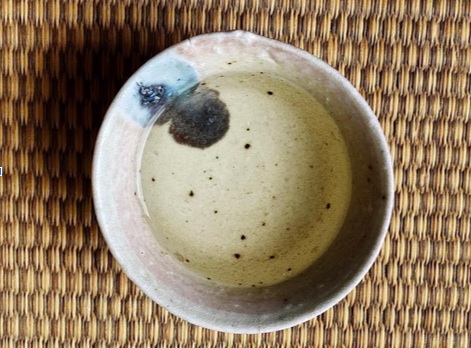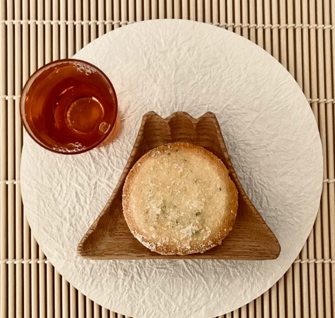
The Sake Allure by Anat
The Sake Allure
It’s been 25 years since I was first introduced to sake. It was during my first visit to Japan in 1995 when I was offered a cup of this mysterious drink on a boat trip to Okayama, and I was hooked right away. However, only after enrolling a sake course, (run by WSET), and taking part in a three-day seminar in Akita (organized by JSA) that I came to realize how little I knew, or understood, about this magnificent and sophisticated beverage. The more I learn about sake and the process of making it, the more breweries I visit and brewers I meet, the more different kinds of sakes I get to taste, the bigger and deeper my fascination and curiosity grows. I can confidently say that I am completely enchanted with Sake and its fascinating culture.
“Rather Be a Pot of Sake Than a Human Being”[1]
What was it about sake 25 years ago that left such an impression on me? Trying to recall I believe the first impact was the way it was, and still is, served and consumed. Sake, an alcoholic beverage which its history goes back more than 2000 years, embodies different aspects of the Japanese culture such as spiritualism and rituals, craftsmanship, reciprocity between people and the strong connection between the Japanese inhabitants and the nature which surrounds them. Starting with the unique Japanese custom, in which one learns once participating in a nomikai (drinking party/gathering). Here, it is expected from participants to be vigilant to their friends’ or colleagues’ “empty glasses”, once noticing an ‘empty glass’ they must hurry to fill it again. This reflects an overall Japanese state of mind, which differs from the way of thinking of those who visit Japan from other countries. Here, a rigid social code is expected from individuals, and it is to always put the needs of others above your own, in order to maintain a harmonious environment and a tranquil atmosphere. When I first learned about this (and I must admit that at first, I found this a bit stressful), I remember how overwhelmed and impressed I was. In time I also came to learn that this custom can go far deeper and complex, especially from the point of view of a non-Japanese person, when one is expected to follow an unwritten rule which applies to the “hierarchy of serving”; who’s glass should first be filled (the complex social structure of “senpai and kohai” embodied within a group of people in Japan). As time went by, I also realized that this custom serves as a great “ice breaker” especially in parties or gatherings in which not all participants are familiar with one another.
Another element that caught my attention 25 years ago when experiencing my first sake encounters were the drinking vessels (guimoni). Sake, especially when served warm, will often come in a small serving bottle (tokkuri) or container often made of ceramics, accompanied with choko, which is a small cup for drinking sake made of ceramics as well. Two features about those small vessels captured me; first, on certain occasions and locations those ceramics vessels were revealed to me as beautiful pieces of art and craftmanship. Some were so beautiful and aesthetic pieces of art that all I wanted to do was to hold and feel their texture and glaze. I found that one could enjoy himself or herself by only looking at the serving set, let alone use it as a serving vessel from which a delicious drink is consumed. The second feature which is related to these precious dirking tools is another custom, which I believe is unique to the Japanese culture (or at least from my humble experience I had never encountered in any other place than in Japan), a custom in which a host of a party will approach his guests while holding/carrying a tray laden with many small sake glasses all different in shape and designs, and ask each guest to choose his or hers favorite one. Once choosing, this will be the cup to which the participant will hold on to and drink his or her sake for the duration of the party.
Photography and Brewing
My first visit to a sake brewery was in 2010. Back than I was still a student of photography at the Visual Arts Departments at the University of Japan College of Art (Nichigei). For an ongoing photography project, I was working on at the time, I used to go often to the Golden Gai area in Shinjuku in order to take photos of what I believed to be a one of a kind location. One of my favorite places was a bar called Nagisa which was owned by an enigmatic and beautiful singer named Nagisa Yoko (Nagisa san passed away in 2018). Nagisa bar is where I first encountered two persons, both Japanese, who later became my “partners in crime” with regards to exploring this fascinating drinking scene of Golden Gai area. We spent longs nights together drinking and meeting interesting people, drinking lots of shōchu and nihonshu. One day, one of the two suggested we go on a day trip to a brewery located within the Tokyo greater area, so off we went on what we named a “Sake Day Trip” visiting Sawanoi Brwery. Back then my knowledge about sake was really insufficient, all I knew was how to enjoy drinking it… However, I can still remember vividly the minute we entered the brewery itself and the way it made me feel. I remember I felt that we were entering a sacred place, a different world. I strongly remember the intoxicating smell there; I was under a spell. As a photographer I couldn’t stop taking photos and I suppose that was the reason I paid little attention to the information and explanations we were given there. Although this was a powerful experience for me, as well as a photographic inspiration and celebration, it took me another 9 years before going on my second visit.
My next visits to sake breweries took place only after enrolling for the WSET course and the JSA seminar in Akita. I believe it goes without saying that visiting a sake brewery after gaining some knowledge about the making of sake, intensifies the overall experience. Only after taking those courses (and although living in Japan for so many years and admiring the Japanese cousin), I was first exposed to Kōji, or rather I shall say the magic of Koji and the magnificent world of the yeast and other microorganism which take part in the making of the sake. Above all, the encounters with inspiring and creative people who make the sake were priceless and gave the whole experience of drinking and tasting a particular sake a whole different dimension for me. All different Toji sama, and Kurabito I was given the opportunity to meet during my visits to different breweries located in different parts of Japan, always left me with the impression that they were all artists. I look at the making of sake as artwork. I therefore came to realize that whenever I meet a Toji san in his or her brewery, and after interacting with him or her, and listen to the way they are telling the story of their own sake and their sake-making agendas, when coming to taste their sakes, I can feel part of their soul and spirit and characteristics inside their products. Discovering the strong correlation between the maker and their sake was a revelation that made me feel more enchanted with the overall culture of sake in Japan. From my perspective, it is just like giving five different photographers the same camera and asking them to take photos of the same object or the same scene and yet, the resulted images will distinctively differ from one another.
@Anat Parnass

[1] A line taken from a Waka poem written by Otomo no Tabito: A military leader and a poet lived in Nara Period (665-731).




